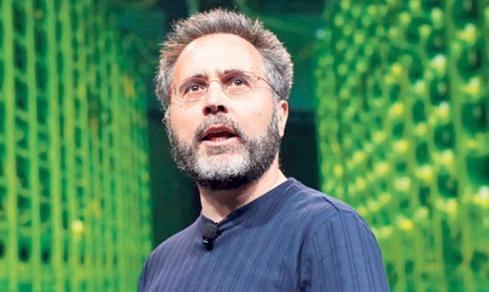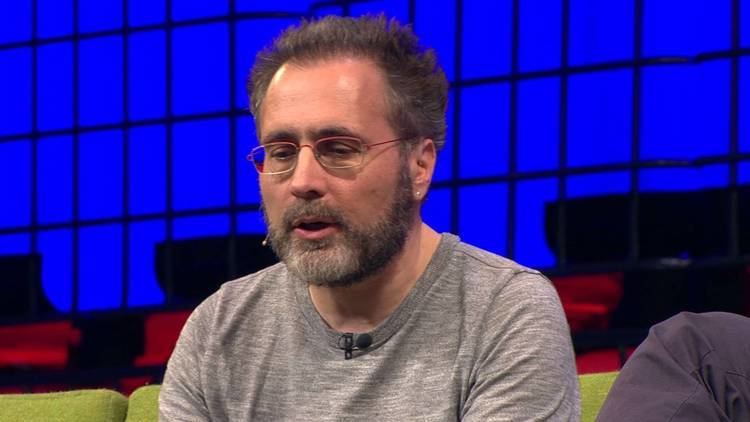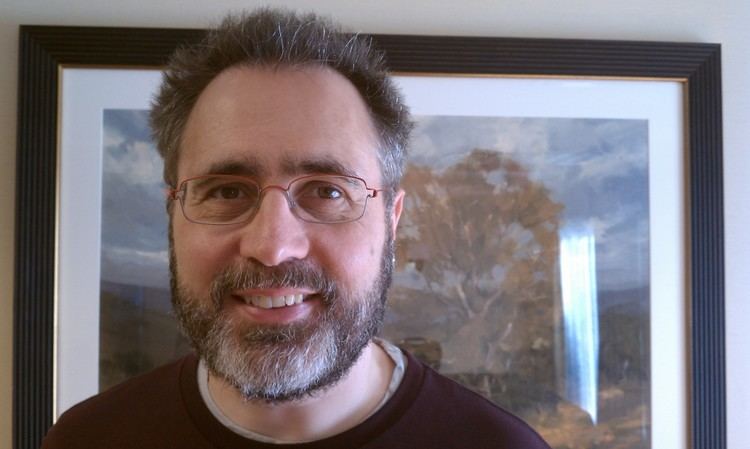Name Urs Holzle | ||
 | ||
Institutions University of California, Santa BarbaraGoogle Alma mater ETH ZurichStanford University Thesis Adaptive optimization for Self: Reconciling High Performance with Exploratory Programming (1994) Doctoral advisor David UngarJohn L. Hennessy | ||
Horizon urs ho lzle infrastructure for the long term
Urs Hölzle ( [ˈʊrs ˈhœltslɛ]) is a Swiss software engineer and technology executive. He is the senior vice president of technical infrastructure and Google Fellow at Google. As Google's eighth employee and its first VP of Engineering, he has shaped much of Google's development processes and infrastructure.
Contents
- Horizon urs ho lzle infrastructure for the long term
- Urs h lzle innovation not infrastructure
- Career
- References

Urs h lzle innovation not infrastructure
Career
Before joining Google, he was an Associate Professor of Computer Science at University of California, Santa Barbara. He received a master's degree in computer science from ETH Zurich in 1988 and was awarded a Fulbright scholarship that same year. In 1994, he earned a Ph.D. from Stanford University, where his research focused on programming languages and their efficient implementation. Via a startup founded by Hölzle, David Griswold, and Lars Bak (see Strongtalk), that work then evolved into a high-performance Java VM named HotSpot, acquired by Sun's JavaSoft unit in 1997 and from there became Sun's premier JVM implementation.

He was also Brian Reid's manager at Google and mentioned in a lawsuit by Reid charging age-discrimination.
He is credited for creating Google Gulp for April Fool's Day in 2005.

He is also credited for having led the design of Google's very efficient data centers which are said to use less than half the power of a conventional data center. In 2014 he received The Economist's Innovation Award for his datacenter efficiency work. With Luiz Barroso, he wrote The Datacenter as a Computer: An Introduction to the Design of Warehouse-Scale Machines. In June 2007, he introduced the Climate Savers Computing Initiative together with Pat Gelsinger which aims to halve the power consumption of desktop computers and servers.
Also in 2007, he and Luiz Barroso wrote "The Case for Energy Proportional Computing" which argued that servers should be designed to use power in proportion to their current load, because they spend much of their time being only partially loaded. This paper is often credited for spurring CPU manufacturers to make their designs much more energy efficient. Today, energy proportional computing has become a standard goal for both server and mobile uses.

In 2011, Hölzle announced a shift in Google.org's alternative energy investment strategy, dropping development of "solar thermal" electricity (for example with BrightSource Energy) because ST was not keeping pace with the rapid price decline of another solar technology – photovoltaics.

In 2012, Hölzle introduced "the G-Scale Network" on which Google had begun managing its petabyte-scale internal data flow via OpenFlow, an open source software system jointly devised by scientists at Stanford and the UC Berkeley and promoted by the Open Networking Foundation. The internal data flow, or network, is distinct from the one that connects users to Google services (Search, Gmail, YouTube, etc.). In the process of describing the new network, Hölzle also confirmed more about Google's making of its own networking equipment like routers and switches for G-Scale; and said the company wanted, by being open about the changes, to "encourage the industry — hardware, software and ISP's — to look down this path and say, 'I can benefit from this.'" He said network utilization was nearing 100% of capacity, a dramatic efficiency improvement.
He is member of the National Academy of Engineering, and a Fellow of the Association for Computing Machinery (2009) and the Swiss Academies of Arts and Sciences He is also a board member of the US World Wildlife Fund.
